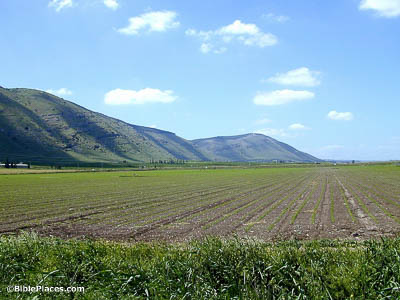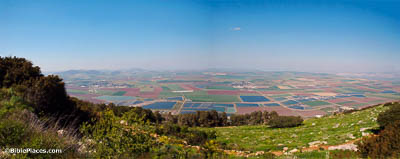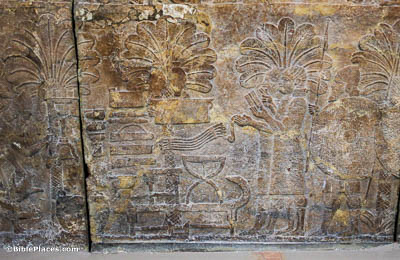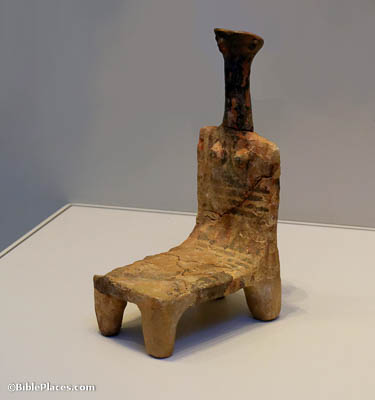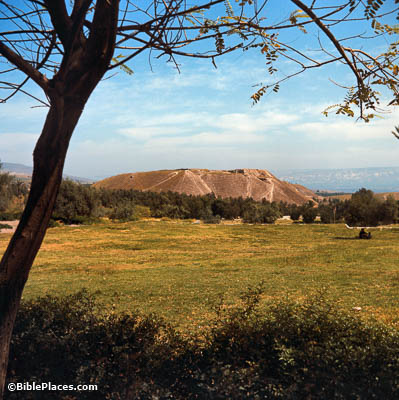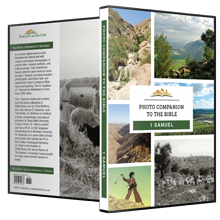And the men of Israel fled before the Philistines and fell down slain on Mount Gilboa (31:1).
The Israelites retreated to the higher ground where their initial camp had been, on Mount Gilboa. They likely thought that they could escape the Philistine grasp by fleeing up this mountain. Perhaps they attempted to find refuge in whatever forests may have existed at the time. This view from the floor of the Harod Valley give some idea of the height of the hills of Mount Gilboa.
